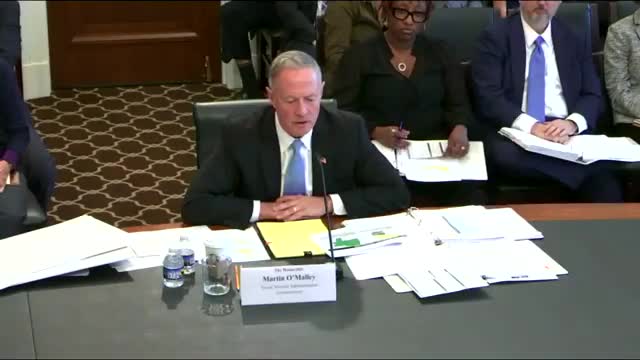Social Security Commissioner warns of IT crisis without $5 billion modernization investment
This article was created by AI summarizing key points discussed. AI makes mistakes, so for full details and context, please refer to the video of the full meeting. Please report any errors so we can fix them. Report an error »

In a recent meeting of the U.S. House Committee on Appropriations, significant concerns were raised regarding the Social Security Administration's (SSA) outdated technology and the urgent need for increased funding to modernize its systems. The discussions highlighted a critical gap in financial support that has hindered the agency's ability to upgrade its IT infrastructure, which is essential for improving service delivery to millions of Americans.
The SSA's current IT budget has remained stagnant for over a decade, forcing the agency to allocate a growing portion of its resources to maintaining legacy systems rather than investing in modernization. This situation has led to fears of potential system failures, with the agency's commissioner expressing deep concerns about the risks posed by antiquated technology. He emphasized that without a substantial one-time investment of approximately $5 billion, the SSA may struggle to enhance its customer service capabilities and keep pace with the demands of an aging population.
The committee members acknowledged the inefficiencies caused by continuing resolutions (CRs), which have resulted in hiring freezes and limited funding for necessary projects. They discussed the importance of establishing a dedicated technology modernization fund, similar to those used in the private sector, to ensure that agencies can access the capital needed for timely upgrades without the fear of budget cuts.
In addition to the pressing need for IT improvements, the meeting also touched on the broader implications of these funding challenges. As the population ages, the SSA faces increasing demands for its services, yet its workforce has been shrinking. This combination of factors has raised concerns about the agency's ability to effectively manage its responsibilities and serve the public efficiently.
The discussions underscored a critical moment for the SSA, as lawmakers consider the necessary steps to secure funding and support for modernization efforts. The outcomes of these deliberations will have a direct impact on the agency's ability to provide timely and effective services to the American public, particularly as the demand for social security benefits continues to grow.
The SSA's current IT budget has remained stagnant for over a decade, forcing the agency to allocate a growing portion of its resources to maintaining legacy systems rather than investing in modernization. This situation has led to fears of potential system failures, with the agency's commissioner expressing deep concerns about the risks posed by antiquated technology. He emphasized that without a substantial one-time investment of approximately $5 billion, the SSA may struggle to enhance its customer service capabilities and keep pace with the demands of an aging population.
The committee members acknowledged the inefficiencies caused by continuing resolutions (CRs), which have resulted in hiring freezes and limited funding for necessary projects. They discussed the importance of establishing a dedicated technology modernization fund, similar to those used in the private sector, to ensure that agencies can access the capital needed for timely upgrades without the fear of budget cuts.
In addition to the pressing need for IT improvements, the meeting also touched on the broader implications of these funding challenges. As the population ages, the SSA faces increasing demands for its services, yet its workforce has been shrinking. This combination of factors has raised concerns about the agency's ability to effectively manage its responsibilities and serve the public efficiently.
The discussions underscored a critical moment for the SSA, as lawmakers consider the necessary steps to secure funding and support for modernization efforts. The outcomes of these deliberations will have a direct impact on the agency's ability to provide timely and effective services to the American public, particularly as the demand for social security benefits continues to grow.
View full meeting
This article is based on a recent meeting—watch the full video and explore the complete transcript for deeper insights into the discussion.
View full meeting